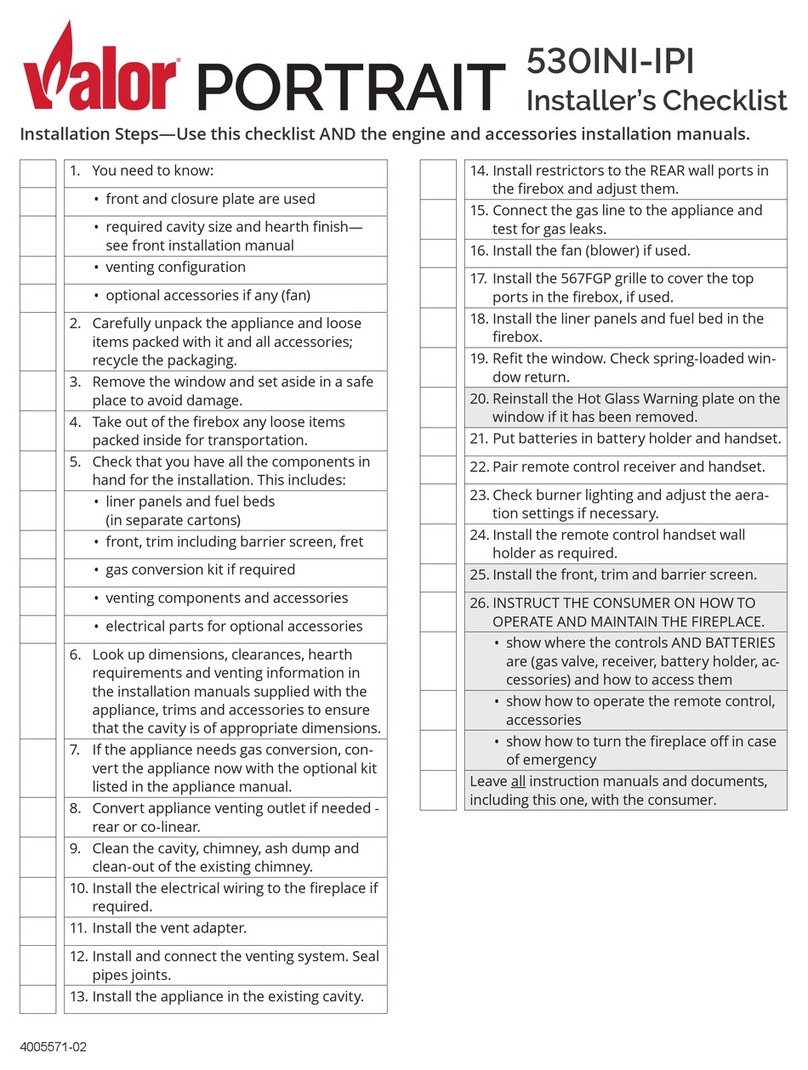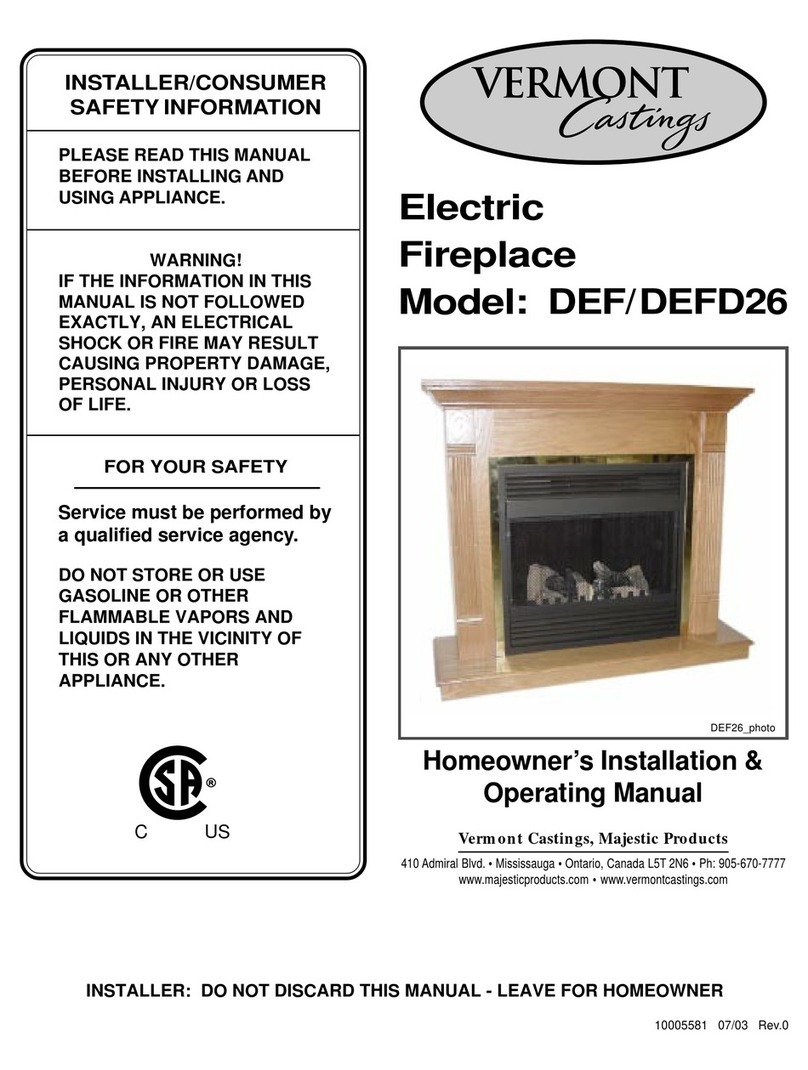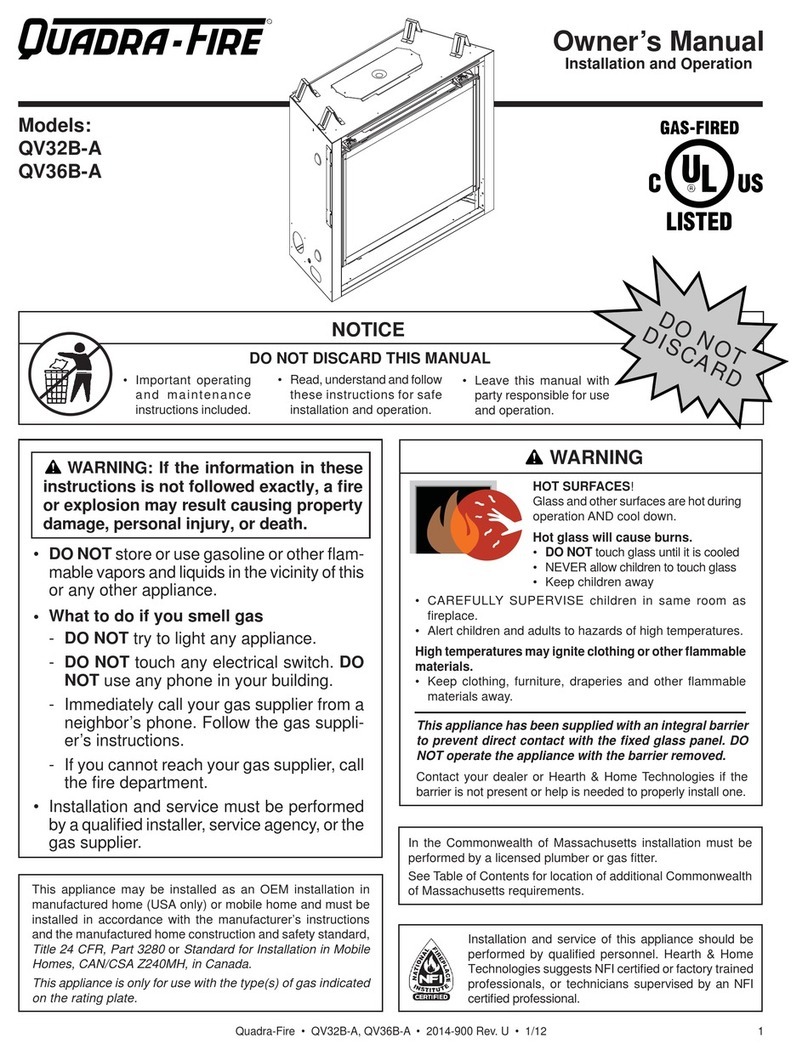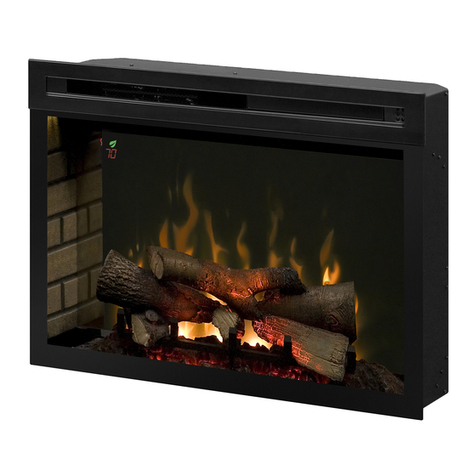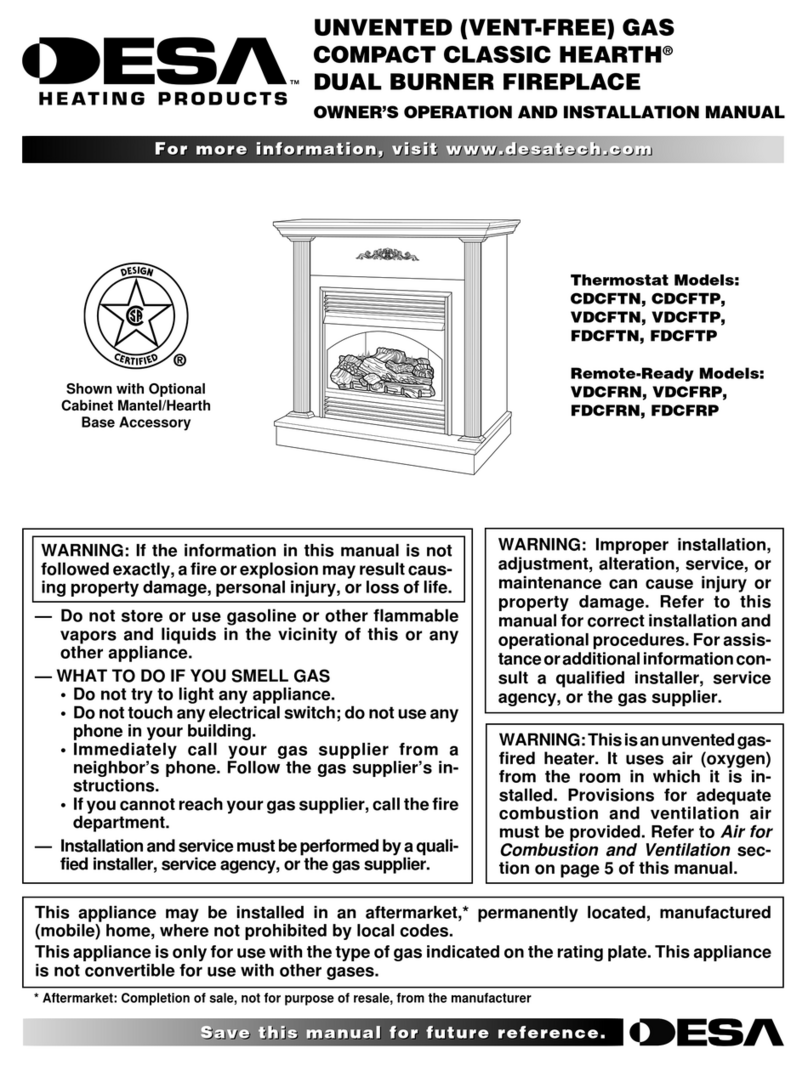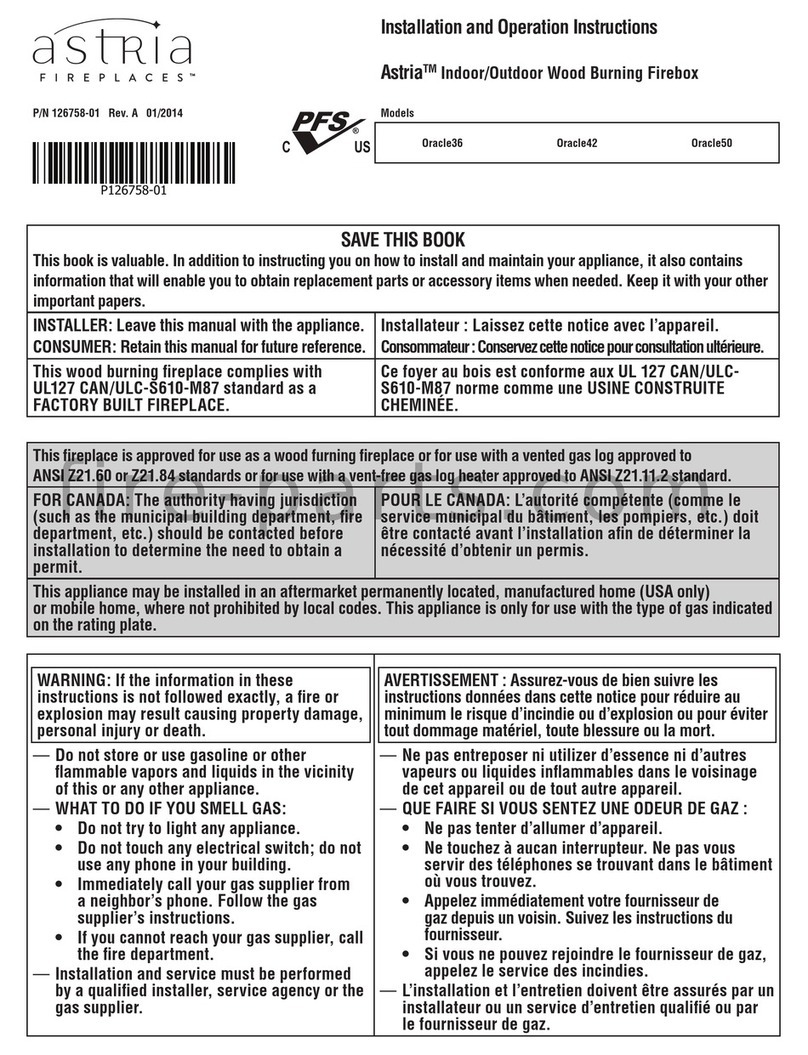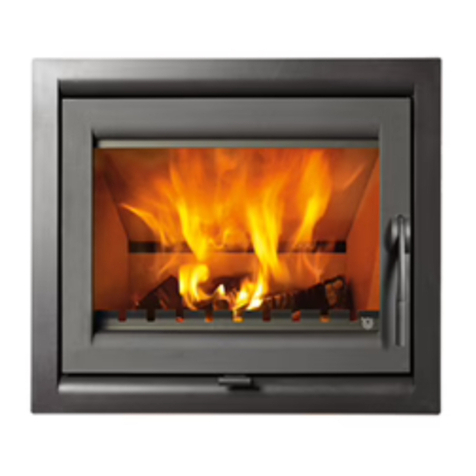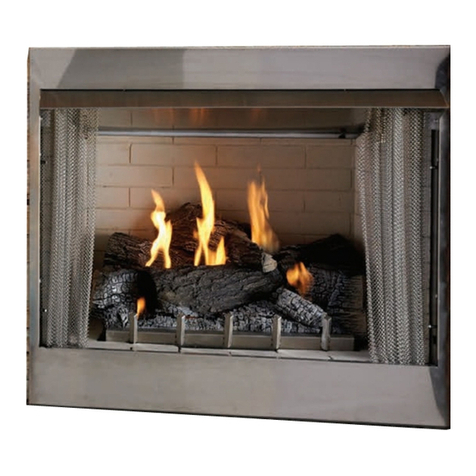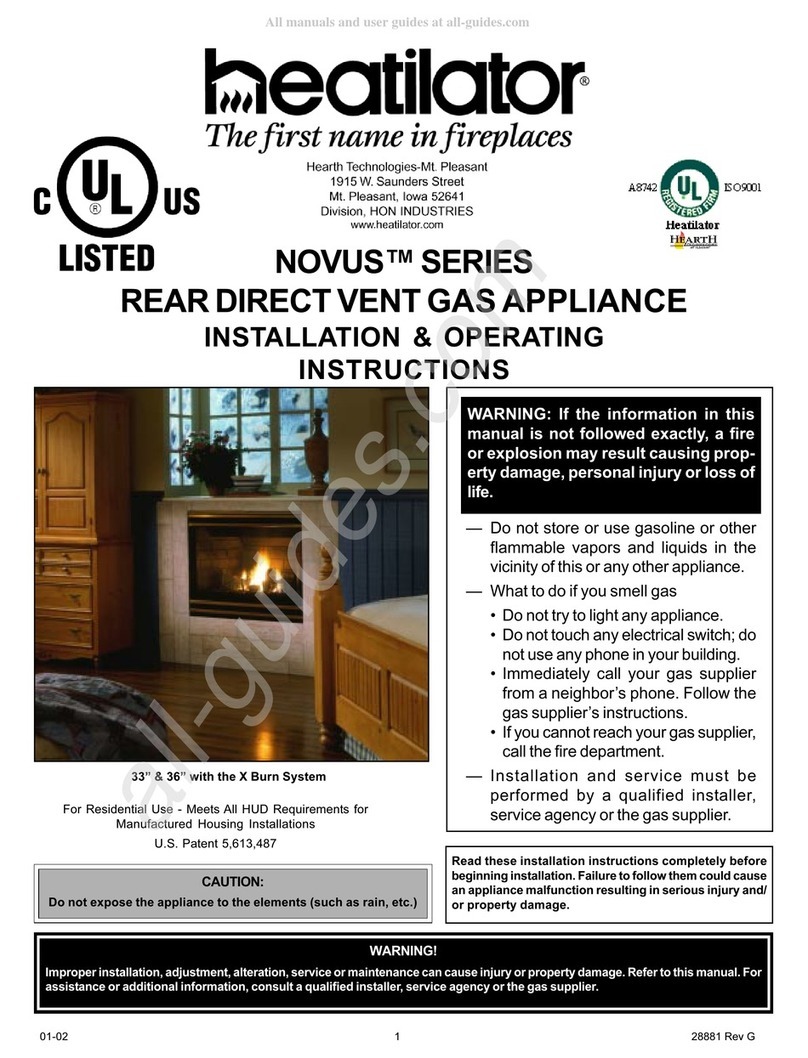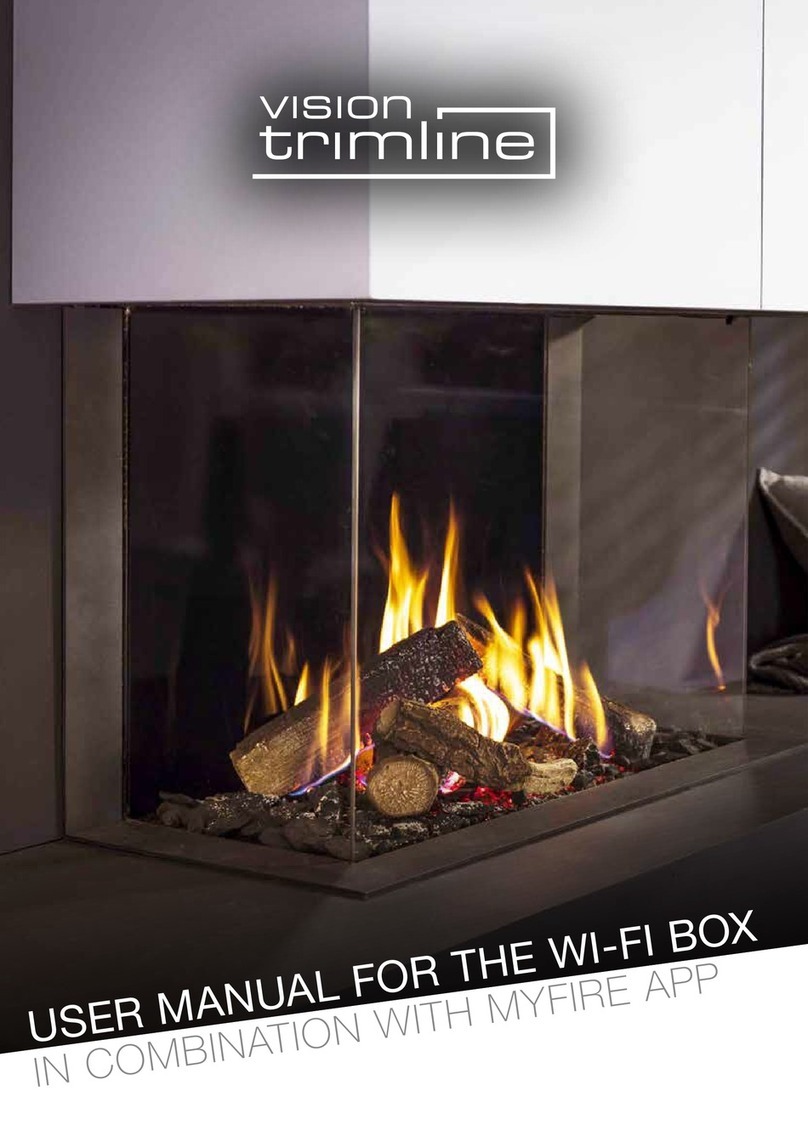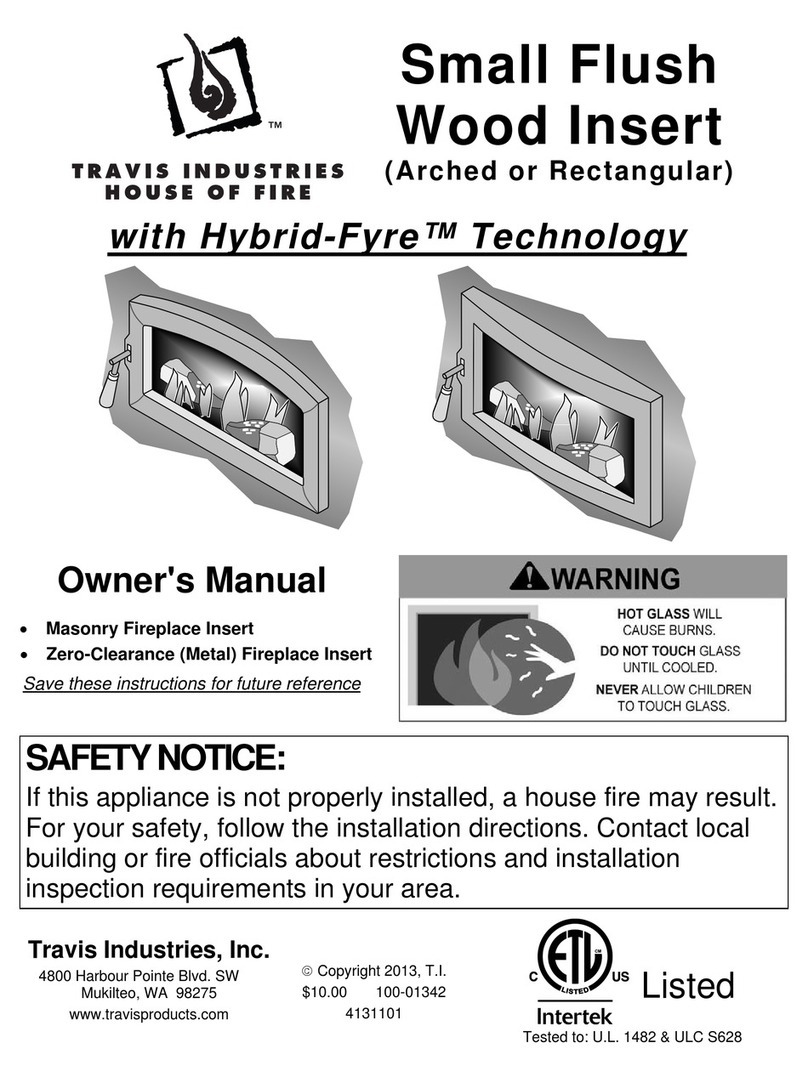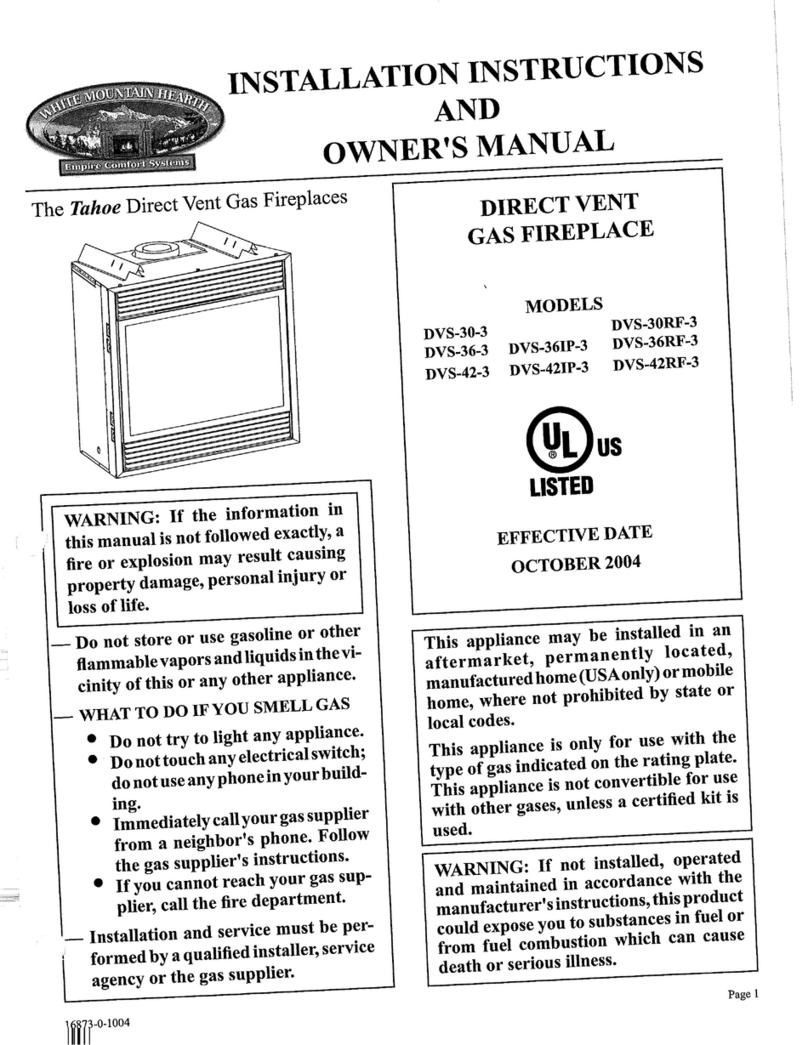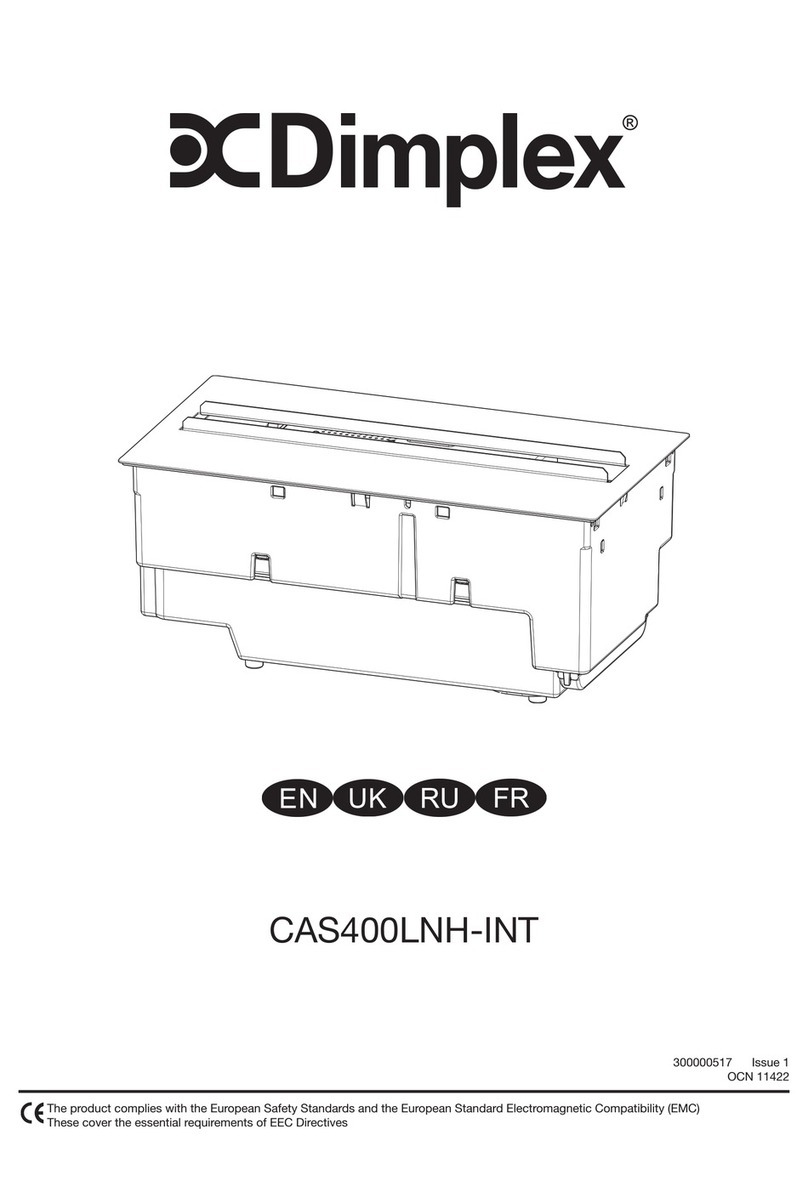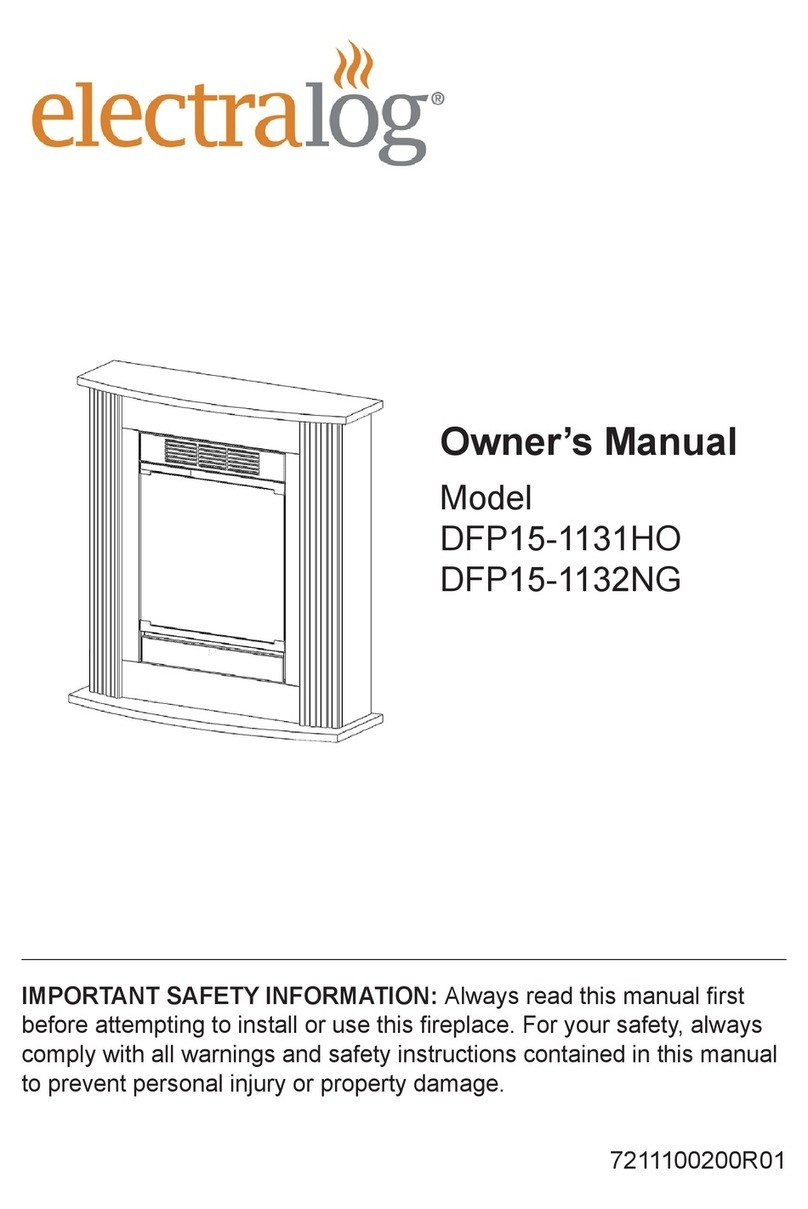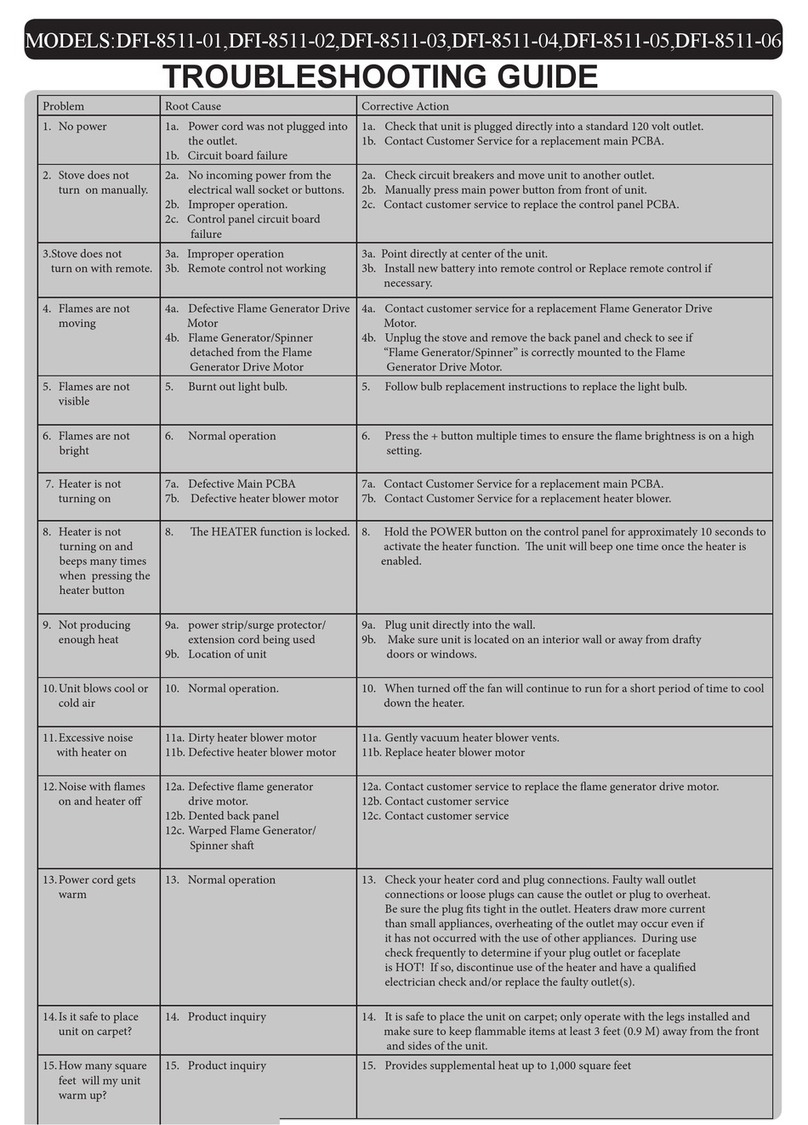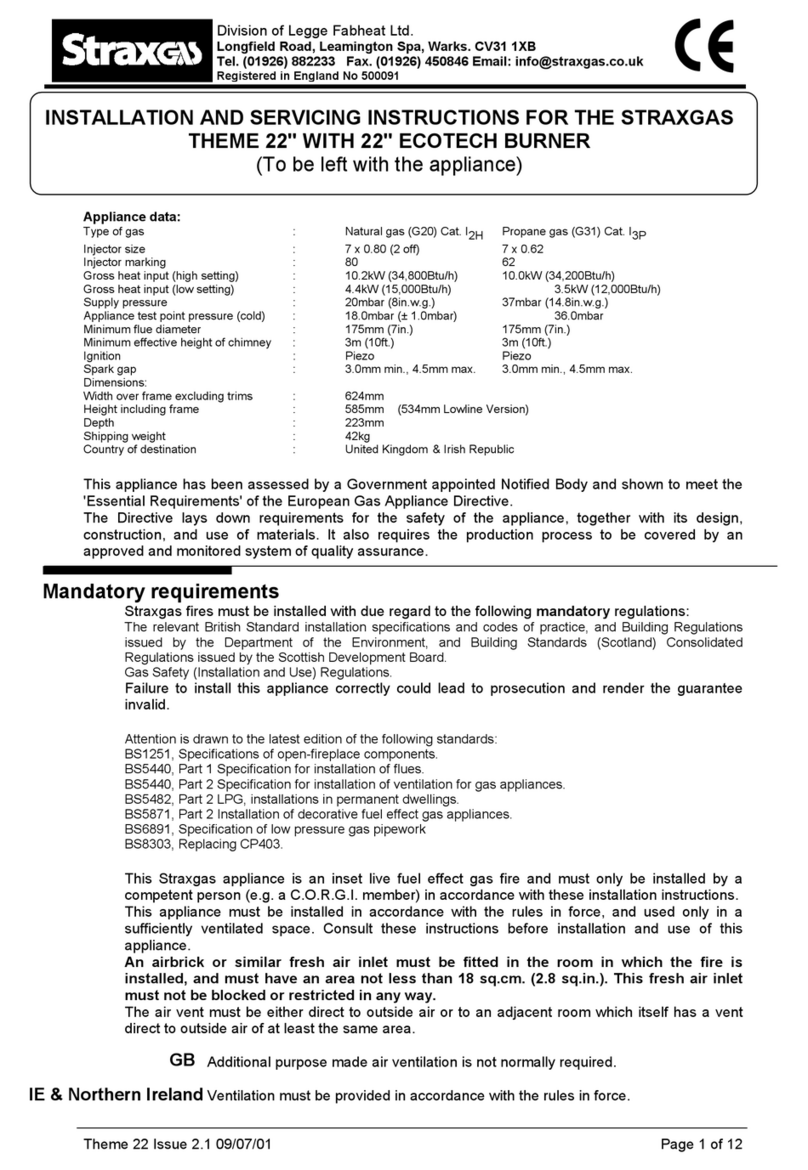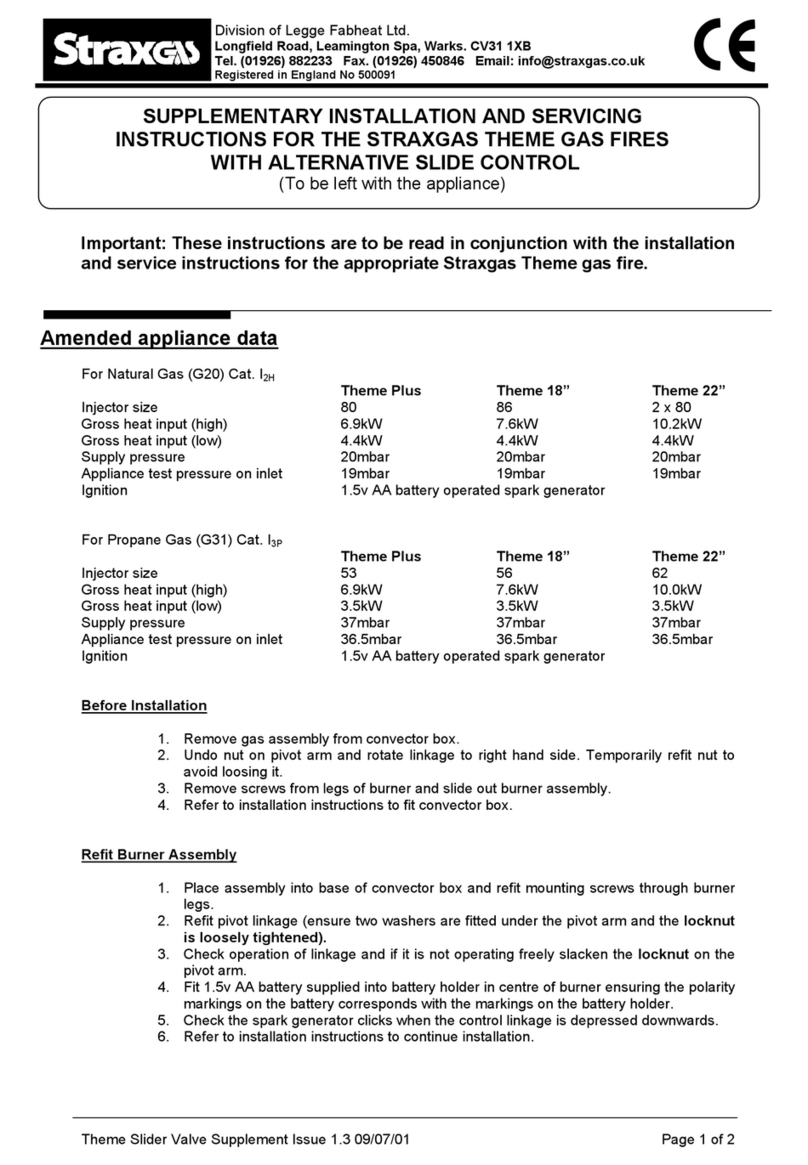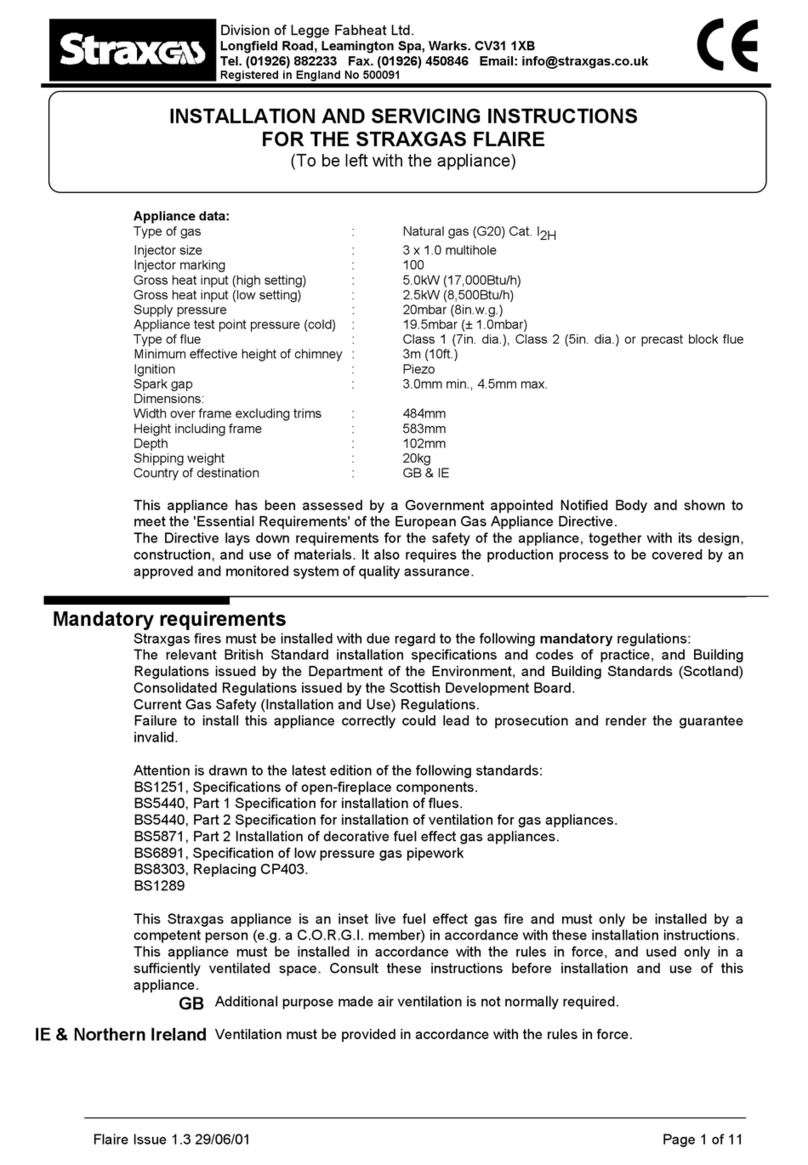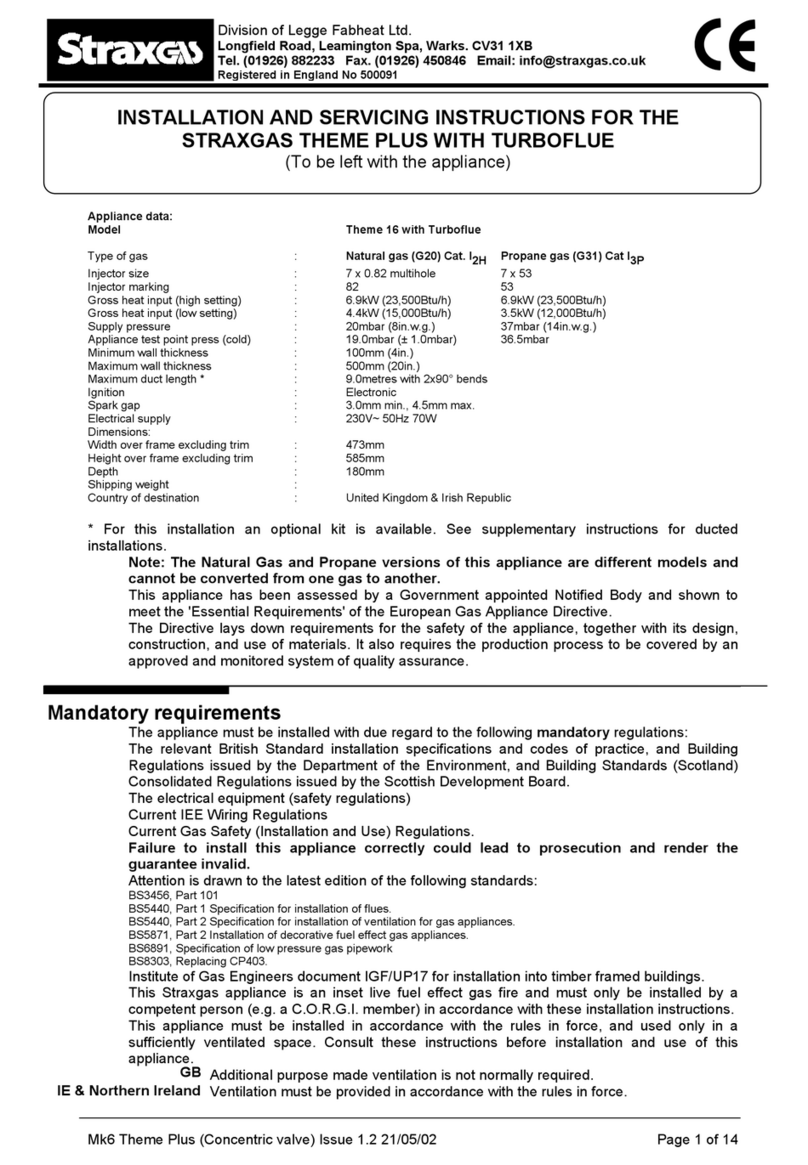
Theme Plus Issue 2.1 28/06/01 Page 1 of 12
Appliance data:
Type of gas : Natural gas (G20) Cat. I2H Propane gas (G31) Cat. I3P
Injector size : 7 x 0.80 multihole 7 x 0.53 multihole
Injector marking : 80 53
Gross heat input (high setting) : 6.9kW (23,500Btu/h) 6.9kW (23,500Btu/h)
Gross heat input (low setting) : 4.4kW (15,000Btu/h) 3.5kW (12,000Btu/h)
Supply pressure : 20mbar (8in.w.g.) 37mbar (14.8in.w.g.)
Appliance test point pressure (cold) : 19.0mbar (± 1.0mbar) 36.5mbar
Type of flue : Class 1 (7in. dia.), Class 2 (5in. dia.) or precast block flue
Minimum effective height of chimney : 3m (10ft.) 3m (10ft.)
Ignition : Piezo Piezo
Spark gap : 3.0mm min., 4.5mm max. 3.0mm min., 4.5mm max.
Dimensions:
Width over frame excluding trims : 473mm
Height including frame : 585mm (534mm Lowline Version)
Depth : 180mm
Shipping weight : 36kg
Country of destination : United Kingdom and The Republic of Ireland
NOTE: The Natural Gas and Propane Gas versions of this appliance are different models and
cannot be converted from one gas to another.
This appliance has been assessed by a Government appointed Notified Body and shown to meet the
'Essential Requirements' of the European Gas Appliance Directive.
The Directive lays down requirements for the safety of the appliance, together with its design,
construction, and use of materials. It also requires the production process to be covered by an
approved and monitored system of quality assurance.
Mandatory requirements
Straxgas fires must be installed with due regard to the following mandatory regulations:
The relevant British Standard installation specifications and codes of practice, and Building Regulations
issued by the Department of the Environment, and Building Standards (Scotland) Consolidated
Regulations issued by the Scottish Development Board.
Gas Safety (Installation and Use) Regulations.
Failure to install this appliance correctly could lead to prosecution and render the guarantee
invalid.
Attention is drawn to the latest edition of the following standards:
BS1251, Specifications of open-fireplace components.
BS5440, Part 1, Specification for installation of flues.
BS5440, Part 2, Specification for installation of ventilation for gas appliances.
BS5482, Part 2, LPG, installations in permanent dwellings.
BS5871, Part 2, Installation of decorative fuel effect gas appliances.
BS6891, Specification of low pressure gas pipework
BS8303, Replacing CP403.
This Straxgas appliance is an inset live fuel effect gas fire and must only be installed by a
competent person (e.g. a C.O.R.G.I. member) in accordance with these installation
instructions. This appliance must be installed in accordance with the rules in force, and used
only in a sufficiently ventilated space. Consult these instructions before installation and use of
this appliance.
Additional purpose made air ventilation is not normally required.
Ventilation must be provided in accordance with the rules in force.
INSTALLATION AND SERVICING INSTRUCTIONS FOR THE STRAXGAS
THEME PLUS WITH 16" ECOTECH BURNER
(To be left with the appliance)
Division of Legge Fabheat Ltd.
Longfield Road, Leamington Spa, Warks. CV31 1XB
Re
istered in En
land No 500091
IE & Northern Ireland
GB












